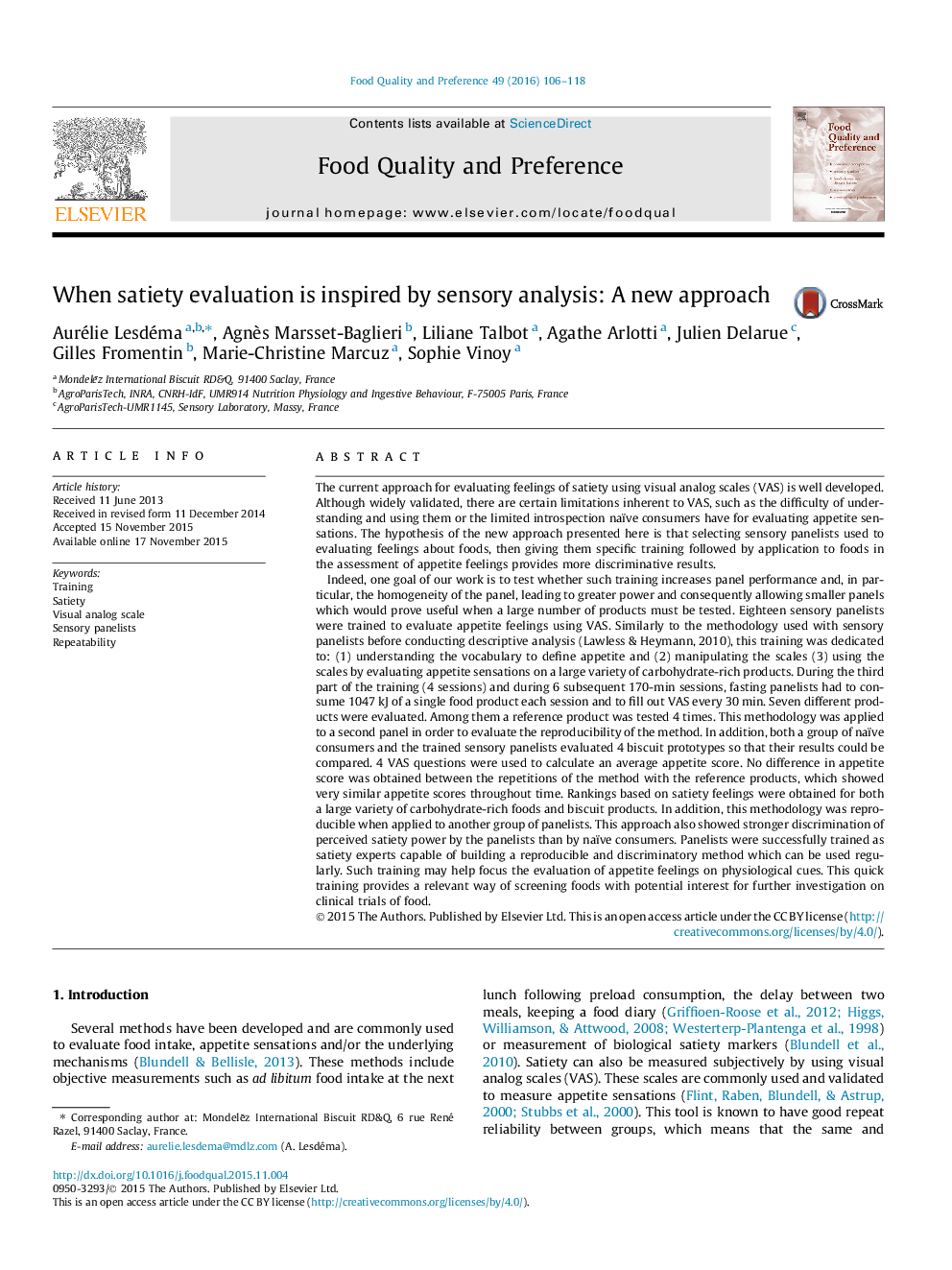| کد مقاله | کد نشریه | سال انتشار | مقاله انگلیسی | نسخه تمام متن |
|---|---|---|---|---|
| 6261265 | 1613150 | 2016 | 13 صفحه PDF | دانلود رایگان |
- We develop a new methodology to train sensory panelists to assess their appetite.
- Panelists were able to rank carbohydrate-rich foods based on their satiety power.
- The satiety evaluation of products is consistent with their macronutrient content.
- This method shows good repeatability.
- This method shows good reproducibility of results when applied to a second panel.
The current approach for evaluating feelings of satiety using visual analog scales (VAS) is well developed. Although widely validated, there are certain limitations inherent to VAS, such as the difficulty of understanding and using them or the limited introspection naïve consumers have for evaluating appetite sensations. The hypothesis of the new approach presented here is that selecting sensory panelists used to evaluating feelings about foods, then giving them specific training followed by application to foods in the assessment of appetite feelings provides more discriminative results.Indeed, one goal of our work is to test whether such training increases panel performance and, in particular, the homogeneity of the panel, leading to greater power and consequently allowing smaller panels which would prove useful when a large number of products must be tested. Eighteen sensory panelists were trained to evaluate appetite feelings using VAS. Similarly to the methodology used with sensory panelists before conducting descriptive analysis (Lawless & Heymann, 2010), this training was dedicated to: (1) understanding the vocabulary to define appetite and (2) manipulating the scales (3) using the scales by evaluating appetite sensations on a large variety of carbohydrate-rich products. During the third part of the training (4 sessions) and during 6 subsequent 170-min sessions, fasting panelists had to consume 1047Â kJ of a single food product each session and to fill out VAS every 30Â min. Seven different products were evaluated. Among them a reference product was tested 4 times. This methodology was applied to a second panel in order to evaluate the reproducibility of the method. In addition, both a group of naïve consumers and the trained sensory panelists evaluated 4 biscuit prototypes so that their results could be compared. 4 VAS questions were used to calculate an average appetite score. No difference in appetite score was obtained between the repetitions of the method with the reference products, which showed very similar appetite scores throughout time. Rankings based on satiety feelings were obtained for both a large variety of carbohydrate-rich foods and biscuit products. In addition, this methodology was reproducible when applied to another group of panelists. This approach also showed stronger discrimination of perceived satiety power by the panelists than by naïve consumers. Panelists were successfully trained as satiety experts capable of building a reproducible and discriminatory method which can be used regularly. Such training may help focus the evaluation of appetite feelings on physiological cues. This quick training provides a relevant way of screening foods with potential interest for further investigation on clinical trials of food.
Journal: Food Quality and Preference - Volume 49, April 2016, Pages 106-118
